Uttarakhand, nestled in the lap of the majestic Himalayas, is not only renowned for its breathtaking landscapes but is also home to a rich tapestry of cultural and spiritual heritage. One of the most significant aspects of this spiritual legacy is the Panch Kedar, a group of five sacred temples dedicated to Lord Shiva. These temples are not just religious sites but also serve as the focal points for pilgrims seeking divine blessings and a deeper connection with the Supreme Being. In this comprehensive exploration, we delve into the intricate details of each Panch Kedar temple, uncovering their mythological significance, historical context, and the spiritual allure that draws devotees from far and wide.
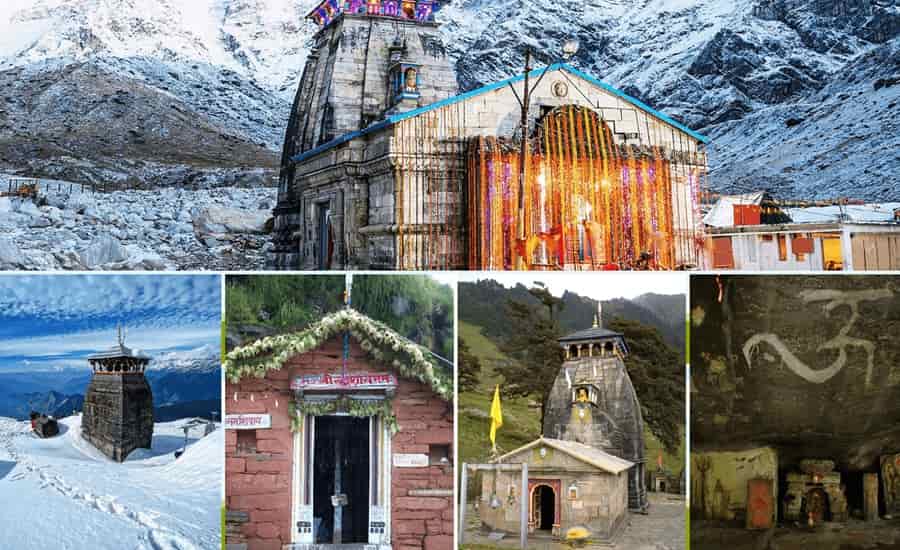
History and Mythology
The history of Panch Kedar is deeply intertwined with Hindu mythology and the epic Mahabharata. According to the legend, after the Kurukshetra War, the Pandavas sought Lord Shiva’s forgiveness for their sins committed during the war. However, Lord Shiva eluded them by taking the form of a bull, later dispersing his body parts across five different locations. These locations came to be known as the Panch Kedar, each enshrining a form of Lord Shiva.
1. Kedarnath Temple: The Celestial Abode
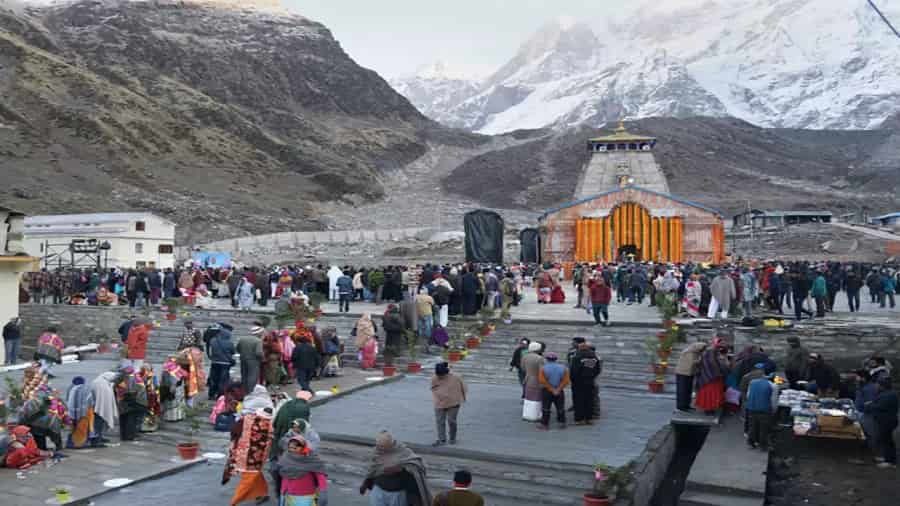
Kedarnath Temple, perched at an elevation of 3,583 meters (11,755 feet), stands as a testimony to devotion and resilience. It is the most revered among the Panch Kedar temples and holds immense spiritual significance. According to Hindu mythology, after the Kurukshetra War, the Pandavas sought forgiveness from Lord Shiva for their sins committed during the war. However, Lord Shiva eluded them and took the form of a bull in Kedarnath. The hump of the bull is worshipped at Kedarnath, and the remaining parts are worshipped at the other four Kedar temples.
The temple, constructed in a magnificent Himalayan style architecture, is believed to have been built by the legendary Pandava prince, Bhima. The temple opens its doors to pilgrims during the summer months and remains closed during the harsh winter due to heavy snowfall.
The most common route to Kedarnath is from Gaurikund, which is well connected by road from major cities like Haridwar and Rishikesh. From Gaurikund, pilgrims have to trek 16 km to reach Kedarnath. Helicopter services are also available for a quicker and more comfortable journey.
Kedarnath is usually open to pilgrims from April to November. The best time to visit is during the summer months (May to June) when the weather is pleasant, and the trekking route is accessible.
2. Tungnath Temple: The Highest Shiva Shrine
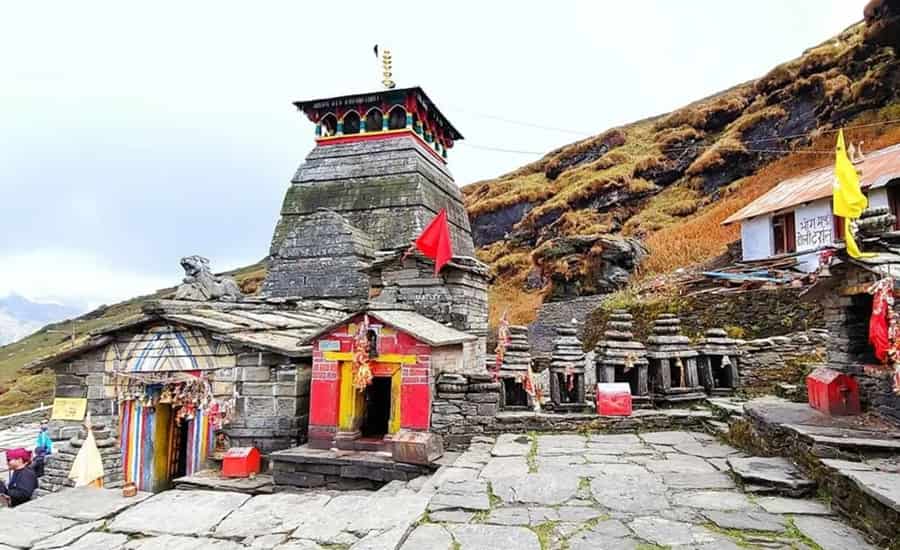
Nestled at an altitude of 3,680 meters (12,073 feet), Tungnath Temple is renowned as the highest Shiva shrine in the world. The temple holds historical significance, with its origin dating back to the Mahabharata era. According to legend, the hands of Lord Shiva appeared at Tungnath after he took the form of a bull at Kedarnath. The temple is also associated with the epic Ramayana, as it is believed to be the place where Lord Rama meditated to seek forgiveness for killing Ravana, a Brahmin.
Tungnath, surrounded by breathtaking vistas of the Garhwal Himalayas, is a trekker’s delight. The trek to Tungnath is a mesmerizing journey that takes pilgrims through alpine meadows and dense forests, offering a blend of spirituality and adventure.
Tungnath is accessible by a 3.5 km trek from Chopta, a picturesque town itself. Chopta is connected by road to major cities like Rishikesh and Rudraprayag.
Tungnath is open from May to November. The summer months are ideal for a visit, as the weather is pleasant, and the trekking route is clear.
3- Rudranath Temple: The Face of Rudra
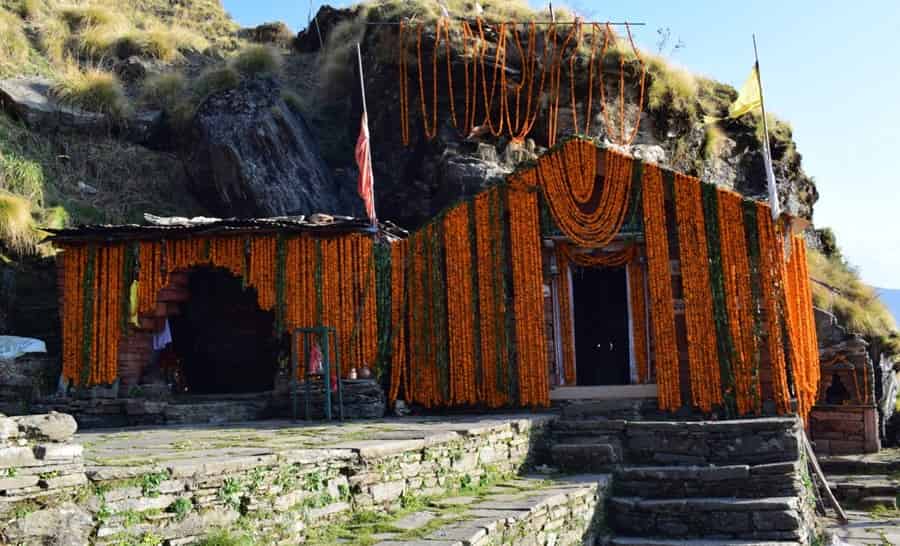
Situated at an elevation of 3,600 meters (11,812 feet), Rudranath Temple is dedicated to the face of Lord Shiva. The deity is revered here in the form of Neelkanth, the one with a blue throat. The mythology associated with Rudranath recounts that after the bull form in Kedarnath, Lord Shiva’s face appeared at Rudranath.
Accessing Rudranath is not a walk in the park; pilgrims embark on a trek that traverses dense forests, meadows, and steep ascents. The journey, however, is a test of one’s devotion and determination, rewarded by the serene atmosphere and the divine presence felt at Rudranath.
How to Reach
Rudranath can be reached via a trek from Sagar Village, which is connected to major cities like Rishikesh by road. The trek is approximately 20 km and offers breathtaking views of the Garhwal Himalayas.
Best Time to Visit
The best time to visit Rudranath is from May to October. The weather is favorable during these months, and the trekking route is open.
4. Madhyamaheshwar Temple: The Navel of Shiva
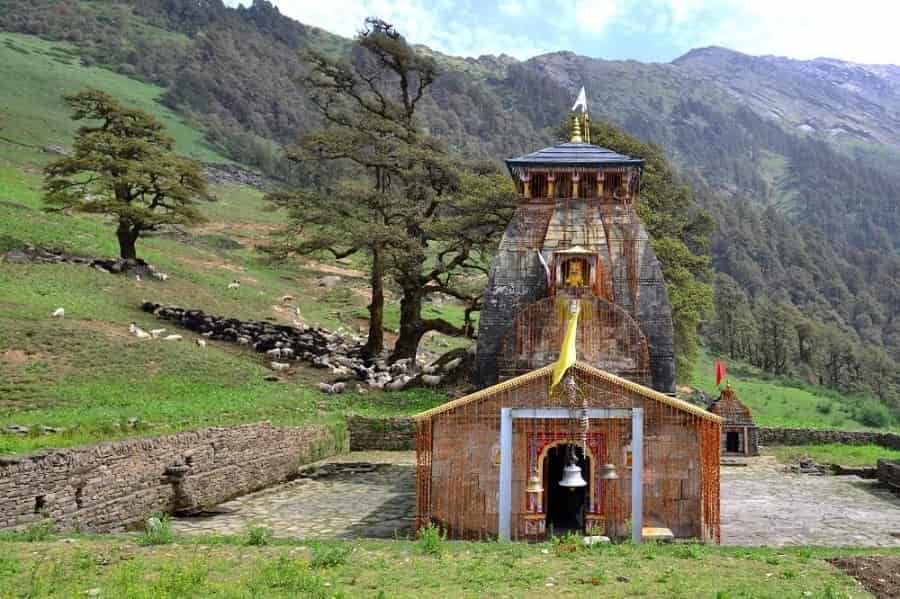
Madhyamaheshwar Temple, located at an altitude of 3,490 meters (11,450 feet), is dedicated to the navel or the abdomen of Lord Shiva. According to mythology, after taking the form of a bull at Kedarnath and revealing his face at Rudranath, Lord Shiva’s navel or abdomen appeared at Madhyamaheshwar.
This temple is surrounded by snow-capped peaks and lush green meadows, offering a tranquil setting for spiritual contemplation. The trek to Madhyamaheshwar is challenging but spiritually rewarding, providing pilgrims with an opportunity to connect with nature and the divine.
How to Reach
Madmaheshwar can be reached by a 16 km trek from Ransi village, which is connected to Rishikesh by road. The trek is challenging but offers stunning views of the Kedarnath peaks.
Best Time to Visit
The temple is open from May to October. The summer months are ideal for a visit, as the weather is pleasant, and the trekking route is accessible.
5- Kalpeshwar Temple: The Jata of Shiva
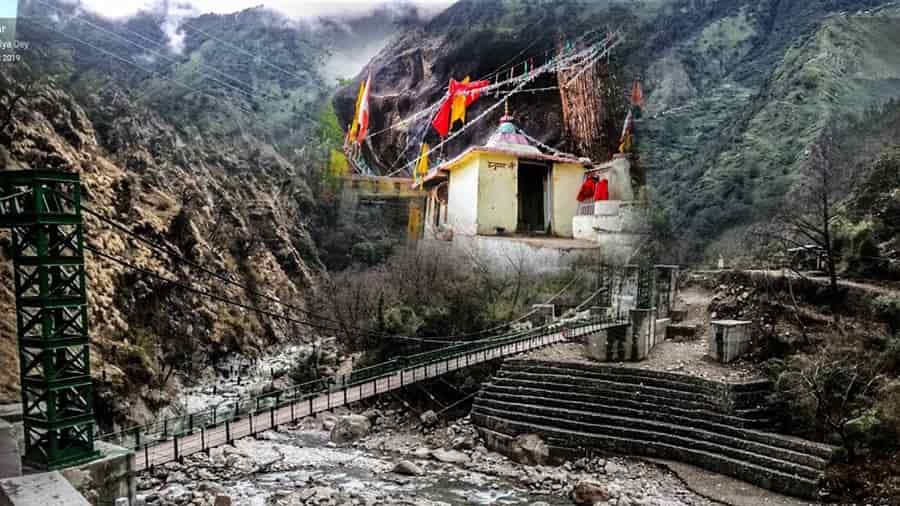
Perched at an altitude of 2,200 meters (7,217 feet), Kalpeshwar Temple is dedicated to Lord Shiva’s hair, known as Jata. The temple is unique among the Panch Kedar as it remains open throughout the year, even during the harsh winter months when the other temples are inaccessible due to heavy snowfall.
Legend has it that when Lord Shiva disappeared at Kedarnath, he reappeared in the form of Jata at Kalpeshwar. The temple, surrounded by lush forests and scenic beauty, offers a serene atmosphere for meditation and introspection.
How to Reach
Kalpeshwar is accessible by a 11 km trek from Helang village, which is connected by road to major cities like Rishikesh. The trek is moderate and offers panoramic views of the surrounding mountains.
Best Time to Visit
Kalpeshwar is open from May to November. The summer months are the best time to visit, as the weather is favorable.
Travel Tips
Check Weather Conditions
- The yatra involves trekking in high-altitude regions, so it’s crucial to check the weather conditions before embarking on the journey. Carry appropriate clothing and gear for both sunny and cold weather.
Physical Fitness:
- The trekking routes can be challenging, and some paths may be steep and uneven. Ensure that you are physically fit and undertake a fitness routine before the journey. Consult a doctor if you have any health concerns.
Acclimatization:
- Take the time to acclimatize to the high altitudes. This can help prevent altitude sickness, which is common in mountainous regions.
Pack Wisely:
- Pack light but carry essentials such as warm clothing, rain gear, sturdy trekking shoes, a first aid kit, and any personal medications. Make sure to carry a refillable water bottle to stay hydrated.
Permits and Permissions:
- Check if any permits or permissions are required for the trek. Obtain necessary approvals from local authorities to avoid any issues during the yatra.
Local Culture and Customs:
- Familiarize yourself with the local customs and traditions. Respect the religious sentiments of the locals and fellow pilgrims.
Accommodation
- Accommodation options may be limited in remote areas. Book your accommodations in advance.
Conclusion
The Panch Kedar temples take pilgrims on a spiritual journey through some of the most picturesque landscapes in Uttarakhand. Each temple has its own unique history and significance, contributing to the rich tapestry of Hindu mythology. Pilgrims, as well as adventure seekers, find solace and inspiration in the divine aura of these sacred shrines. Visiting the Panch Kedar is not just a religious quest but also an opportunity to connect with nature and explore the pristine beauty of the Himalayas.
- Suggested Tour: Panch Kedar Yatra Package

 Call
Call WhatsApp
WhatsApp Enquiry
Enquiry